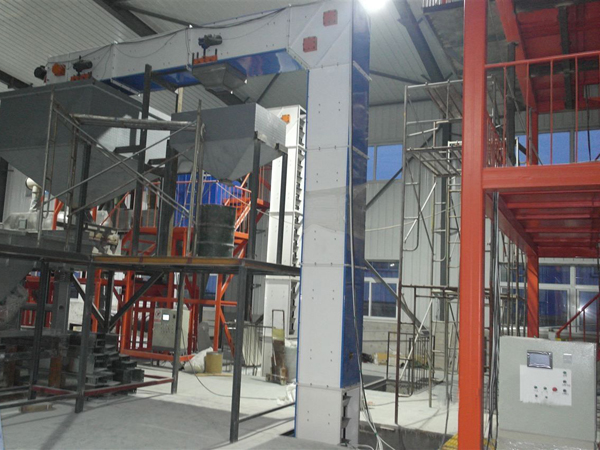The mainly structure of the
Z type bucket elevator includes the driving wheel, tail wheel, cashing, traction, bucket, driving device, back stop device, checking device, tension device. This paper mainly discuss the structure and analysis and optimization of driving wheel, tail wheel of bucket elevator, which used in grain industry.
1. Analysis the structure of Z-type bucket elevator
1.1 analysis the structure of driving wheel
With the capacity of
z-type bucket elevator increasing, the material in z-type bucket elevator is increasing, and the line speed of the material is increasing too( in recent, the ordinary speed is between the 2.0~4.0m/s). In order to improve the material conveying capacity, the dustbin adopts shallow wide dustbin which is suitable for high filling rate in high speed operation, and even adopts double shallow wide dustbin structure, resulting in large width size of driving wheel. According to the formula V (linear velocity) = L (circumference)×n (rotational speed) 60, the design of the driving wheel not only meets the requirements of linear velocity, but also ensures the safety and stability of the equipment. Obviously, linear velocity is a relatively constant value. The traditional structure of the driving wheel is a fully enclosed structure with adhesive on the full roller surface. It is mainly composed of drive shaft, rolling surface, web and adhesive surface layer. Enterprises using this structure type bucket elevator often face adhesive surface wear of different degrees, and some parts of adhesive surface wear is very serious. With the increase of equipment height and equipment type, the pressure, friction and torque on the driving wheel will increase, and the corresponding negative impact will be more obvious.Facing the drive wheel with serious adhesive wear, it is usually necessary to unload the head wheel as a whole and send it to the professional adhesive attaching enterprise to remove the original adhesive surface and re-attach the adhesive. This greatly affects the normal production of production enterprises, increase maintenance costs.
1.2 Analyzing the
Z-type bucket elevator through the structure of the driving wheel. Generally speaking, the structure of driving wheel is fully enclosed. And it is mainly composed of driving shaft, roller space, web. For the grain industry, the requirement of capacity should be met. At the same time, the percentage of damage should less than 1%. The one of reasons of percentage of damage is some material in the traction and the driving wheel. After the running of the driven wheel, the accumulated materials are continuously crushed by the driving wheel and traction. In addition, once the material stuck between the belt and the driven wheel, the belt will be damaged continuously. there has great safety risks.
2.structure optimization
2.1 Driving wheel structure optimization. For the disadvantages of the driving wheel structure, we will provide the optimized solution. It is that the traditional method of integral adhesion of driving wheel was optimized to an assembly partition adhesion. Installing and fixing the driving wheel through bolts, fasteners and other way to achieve that quickly and convenient replacing the worn adhesive parts at any time. Reducing the effect for the normal production and decreasing the cost of maintenance. At the same time, roll surface and adhesive plate should be made into convex arc structure in the manufacturing process in order to avoid the dustpan belt running away.
2.2 Driven wheel structure optimization. The squirrel-cage construction breaks the traditional structure form of the driven wheel and the radial direction of squirrel cage construction adopts the open radial structure. The roller surface of the driven wheel is replaced by the welding of the round steel and the driven wheel web. The effective contact area between the driven wheel and the dustbin belt is obviously reduced. The accumulated materials can slip away from the gap between the round steel when being squeezed, thus reducing the crushing rate





